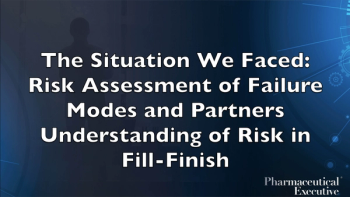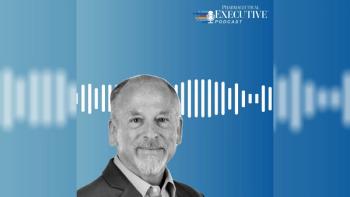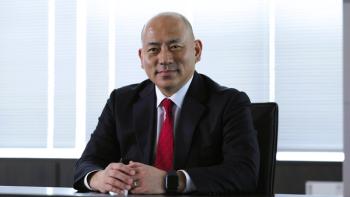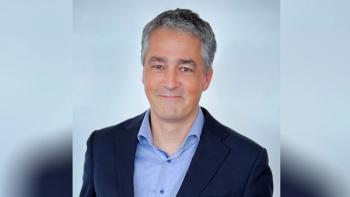
TESARO: Setting New Benchmarks in Patient-Centricity
Mary Lynne Hedley, president and COO of TESARO, talks to Pharm Exec about the company’s innovative approach to responsible drug development and commercialization, and how its theory of putting patients first is translated into practise.
Mary Lynne Hedley, co-founder, president and COO of
TESARO is a young, Waltham, MA-based oncology company devoted to providing transformative therapies for cancer. It was founded in 2010 by Lonnie Moulder and Mary Lynne Hedley, Ph.D., who realized while working side-by-side at MGI PHARMA and then Abraxis BioSciences that they shared the same vision of how a biopharmaceutical company should operate in order to accomplish something meaningful and lasting for patients.
In the seven years since TESARO was founded, it has grown from three associates to nearly 700 on two continents and has achieved a market capitalization of more than $6 billion. Mary Lynne Hedley, its president and COO, spoke to Pharm Exec about how TESARO’s genuine commitment to a patient-first approach, and its fostering of a working environment where collaboration and cooperation are encouraged and rewarded, has seen the company create a new model for rapid and successful growth.
PharmExec: How did you apply your vision of what a biopharmaceutical company should be when establishing TESARO?
Mary Lynne Hedley: We kind of left behind the idea that you need a platform technology or a breakthrough scientific idea to start a biotechnology company. That’s how probably 99 per cent of companies are started, but we didn’t have either of those things. What we did have was the intent to begin with the patient in mind and to have the patient’s needs at the forefront, and we let that drive our decision making from the molecules we chose to develop to the manner in which we commercialize our products.
The goal when we started the company was to build an integrated group of individuals across multiple disciplines, all with a common purpose and, importantly, a sense of urgency to focus on improving the lives of people living with cancer. We wanted to make sure we carried out our work in a way that inspired people to do truly extraordinary things and to think about what the possibilities would be.
We focused very much on external and internal relationships and also on the relationship between the company and our associates. We talked a lot about the concept of the “whole person” in the company. We asked, what is it that the company can do for associates either to encourage their development or to be flexible, recognizing that they have lives outside of the company? On the other hand, we wanted to ensure that our associates are fully present for their colleagues and for the work that we’re doing.
Can you outline what responsible drug development means for you?
With our first drug, Niraparib, an orally active PARP inhibitor we initially targeted for the treatment of ovarian and breast cancer, we wanted to avoid focusing on the “easy things”, combining the drug with radiotherapy and chemotherapy, for example, or testing it in patients with specific genetic mutations. While those approaches may be the way to establish huge commercial markets, we did not believe they added up to the best approach, based on actual patient needs or on the science that we understand. So, we set up a clinical trial that was unique in the way it was designed, enabling us to specifically identify which patients could benefit from this agent, and the outcome was very successful. And then when we brought the agent to market, we were committed to pricing it responsibly. This agent, at the most common prescribed dose, is about 30 per cent lower in price than other agents.
How do you go about integrating the patient in the development process?
The very first thing we do-before we even bring a molecule into the company and think about developing it-is look at the patient experience. We talk to patients, to providers, and to the caregivers who are providing a community around the patients, and we try to understand what is it that the patient really needs - not just what we think they need. Then we ask ourselves if there is a way that we can conduct a clinical trial that improves the patient’s experience. Patients are very courageous and selfless when they volunteer for clinical trials and we want to improve the experience for them. We have assembled groups of patients and asked them what is it like being on a clinical trial. What are the good things and the bad things, and how could things be improved? Through that process, we started incorporating changes into the materials that we provide to physicians to share with patients, and to help patients better understand how the results might pertain to them.
When we have a drug in development, we think about how the patients are organized, how they are receiving information, how we can better understand their disease and how we can create better disease awareness among patients, providers, and even payers. We ran a national campaign surveying patients with ovarian cancer and the physicians who treat them, testing their perceptions, to try and improve the dialogue between those groups, which provided a lot of “aha” moments and broke down a lot of barriers for us. We work with oncology nurses to help them advocate for patients, in particular regarding chemotherapy and the resulting side effects such as nausea and vomiting. We have a drug to prevent that, but we heard that most of the patients who should be getting a drug to prevent nausea and vomiting are not getting it. So we aimed to increase the awareness around this, particularly for oncology nurses who see patients who have these symptoms for several days after chemotherapy.
We also have patients come into the company and talk about their experiences because those inside the company, who are not out in the field every day, do not have the same touch points with a physician or a patient. It is really important for them to understand how meaningful the work they’re doing is.
It sounds like you’re actually doing what a lot of big companies say they’re doing…
A lot of companies do talk about putting the patient first, but the way we measure that at TESARO is that we ask our associates, are we walking the talk? When we say patients are at the heart of all that we’re doing, we ask, do you believe that? We survey our associates anonymously and ask them questions such as these. And we talk about it all the time; when we make decisions that are in the best interests of the patients or when we work closely with patient groups, we make that very visible to the associates at TESARO, so if they’re not immediately involved in that particular activity, then they can be very aware of what we’re doing.
How are you able to achieve responsibility in pricing?
We’re in a very unique position in that we are still a growing company. Our shareholders are looking for continued growth and value creation, but we’re not an earnings-driven company at this point. We’re still spending more money than we’re making, but we’re creating value based on delivering better and better products through our pipeline. That’s how people are measuring us at this time. For us, revenue streams of hundreds of millions of dollars still make a huge difference, so we’re in a position of flexibility and we can think about pricing and commercializing products responsibly.
One of our challenges is making sure that we have the ability to provide access to patients on a global basis. We work with organizations across the globe to develop and manufacture our products, but there are a lot of geo-political risks in the world and we want to make sure that they do not impact our ability to do the work that we feel is really important.
Where would you like TESARO to be in five years’ time?
If we are able to deliver on the pipeline of products we have, we should be approaching having five drugs on the market, addressing not only ovarian cancer and chemotherapy patients at risk for chemotherapy-induced nausea and vomiting, but also potentially lung cancer, breast cancer, and even tumor types that are currently refractory to the new immuno-oncology drugs, such as colorectal cancer. We measure our success on the number of patients that we touch in a positive way and we hope that that number will far exceed the thousands that we are currently helping.
tesarobio.com/
Newsletter
Lead with insight with the Pharmaceutical Executive newsletter, featuring strategic analysis, leadership trends, and market intelligence for biopharma decision-makers.





